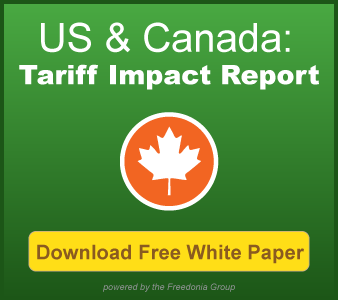Tariff Tracker: Will US Raw Materials Tariffs Give Prospective Fence Buyers Pause?
by Sarah Schmidt
September 13, 2018
The Trump administration's wide-ranging tariffs include new surtaxes on imports of some of the most popular raw materials for fencing. Is this expected to damage fence demand overall?
In short: probably not, and here’s why.
Wood Fencing
A 20.83% tariff was implemented by the US on Canadian softwood lumber in November 2017, with the US Commerce Department citing the Canadian government’s financial support of the Canadian lumber industry as a source of unfair pricing advantages.
The tariffs were supported by the US Lumber Coalition, which argued that they helped level the playing field for US lumber manufacturers. The National Association for Home Builders, however, opposed the tariffs on the grounds that they would increase the cost of building homes. Unsurprisingly, the Canadian government also objected and is officially challenging these duties through NAFTA and the WTO.
Like them or not, the tariffs place upward pressure on the final costs of wood fencing products, either by directly making lumber imported from Canada more expensive or by allowing US lumber manufacturers to raise their prices too. In fact, the Random Lengths Framing Lumber Composite price, which measures the prices of many common varieties of wood, was 70% higher in May 2018 than it was in the previous year. As the cost of wood goes up, fencing manufacturers are being forced to raise their prices if they want to keep their profit margins intact.
As a result, the Canadian lumber import tariffs are expected to have a negative – though modest and short-term – impact on wood fencing demand in the US. US fencing producers also import lumber from countries not impacted by these tariffs, most notably Brazil, and many will be able to replace Canadian lumber with less expensive products from these alternative sources.
Additionally, consumers who specify wood fencing typically do so because of its superior aesthetics, so they won’t necessarily choose a different fencing material just because the cost has gone up. Besides, the Trump administration anticipates that a rise in domestic output will help bring down lumber prices over the long term.
Metal Fencing
Tariffs have also impacted the metal fencing industry. The US imposed tariffs of 25% and 10% on most imports of steel and aluminum, respectively, in March 2018. Commerce Secretary Wilbur Ross justified the tariffs by arguing that foreign competition has reduced US steel and aluminum production and that these tariffs will allow domestic manufacturers to boost output to levels closer to plant capacity.
Here’s the twist: Because President Trump had alluded to these tariffs in the months leading up to their official announcement, fencing manufacturers increased their stocks of metal materials before the tariffs went into effect. This stockpile will help manufacturers keep prices down for bit, but the results won’t last long.
In addition to higher costs for imported steel and aluminum, domestic steel and aluminum producers have raised their own prices to help boost profits, a move that Ben Harper of Seegars Fences calls “American Business 101”. Other experts are forecasting price hikes too:
- Tennessee Valley Fence noticed an increase in prices from its domestic suppliers soon after the tariffs were announced and encouraged customers to act quickly if considering adding an aluminum or steel fence as further price hikes were inevitable.
- Mark de Kleine, an agricultural engineering consultant, noted that steel prices saw significant jumps just a few days after the announcement of the tariffs, and stated that these higher costs would be passed on to fence buyers.
While these increased costs may lead some consumers to postpone installing metal fencing, they aren’t likely to prompt a major shift in fencing material preferences. Metal is uniquely suited for security fencing, so consumers seeking a secure fence are likely to continue to pick metal regardless of price.
The Trump administration expects the impact of these tariffs to be a dramatic increase in domestic steel and aluminum industry employment and output. Whether or not this ends up lowering prices in the long run, consumers should get ready to pay more for metal fencing in the near future.
The Future of Wood & Metal Tariffs
As we’ve seen before, the trade situation can change quickly, as evidenced by the August 27 announcement that the US and Mexico had reached a new tentative trade deal.
While the deal lacks specifics and must be approved by the US Congress, Mexico’s lawmakers, and Canada, it could be the beginning of new NAFTA era. A new NAFTA deal could reduce or eliminate tariffs on Canadian softwood lumber, as well as aluminum and steel imported from Canada and Mexico, once again loosening price competition and fencing prices.
To Learn More
For more information on the US fencing industry, stay tuned for Fencing in the US, a forthcoming new study from the Freedonia Group.
Interested in a deeper dive into North American tariffs and industries they'll impact the most? Download "US & Canada: Tariff Impact Report", a white paper from the Freedonia Group.
About the Author:
Nick Cunningham is an Industry Analyst at the Freedonia Group, where he covers the US and global construction and building products industries.
Have unique research needs?
Freedonia Custom Research listens intently to your needs and objectives. Then we work diligently to define and deliver a service to meet them.Subscribe to Our Blog
Stay up to date with the latest information about new market research and news in areas relevant to your business from our analysts and team members.Freedonia Group Blog Subscription
Provide the following details to subscribe.
